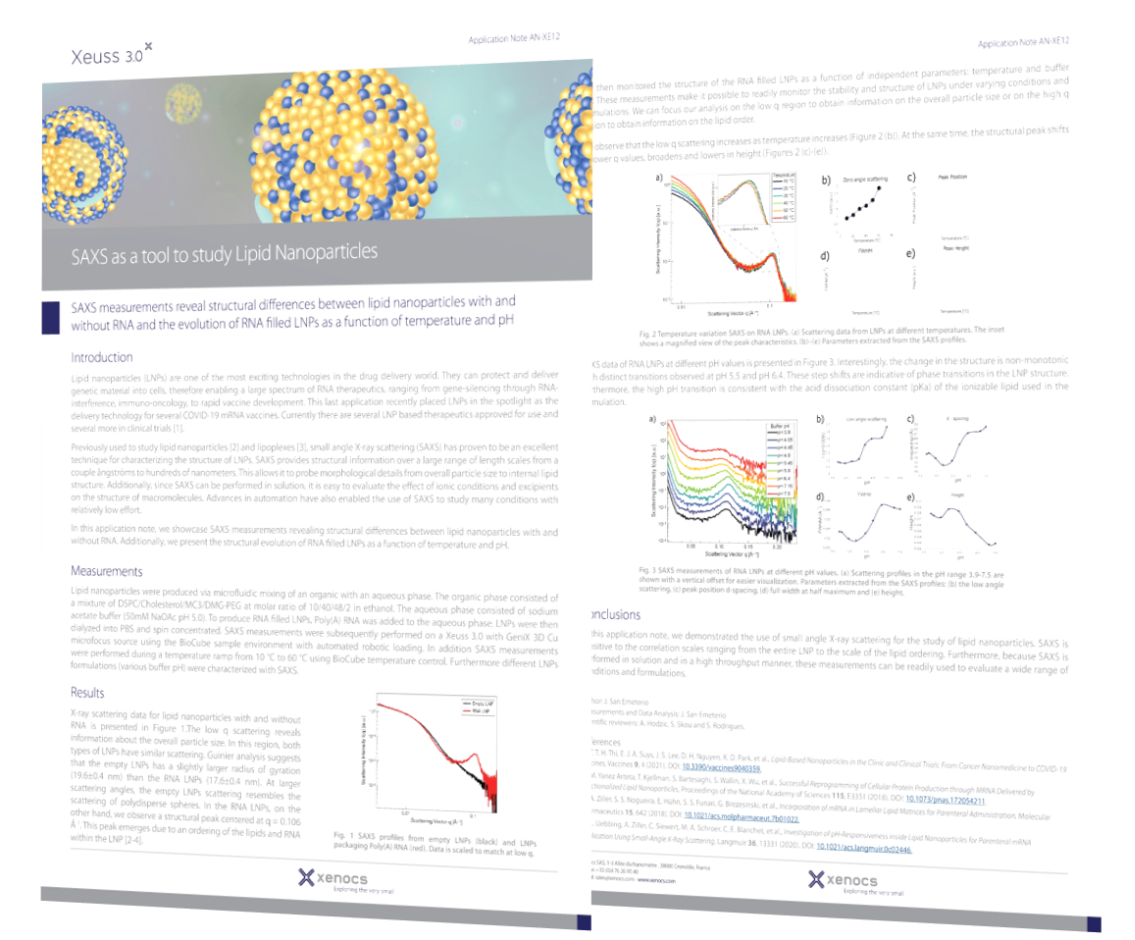Sponsored by Xenocs SASReviewed by Louis CastelSep 26 2023
Lipid nanoparticles (LNPs) are one of the most exciting technologies in drug delivery. LNPs protect and deliver genetic material into cells, allowing a large spectrum of RNA therapeutics, including gene-silencing through RNA interference, immuno-oncology, and the rapid development of vaccines.
The latter of these applications has recently positioned LNPs in the spotlight since it was the delivery technology for several COVID-19 mRNA vaccines. Several LNP-based therapeutics are currently approved, with several more in clinical trials.1
Previously employed to study lipid nanoparticles and lipoplexes, small-angle X-Ray scattering (SAXS) has been demonstrated as an effective method for characterizing the structure of LNPs.2,3
SAXS delivers structural information across various length scales, from a couple of ångströms to hundreds of nanometers. This enables the probing of morphological details from overall particle size to internal lipid structure.
SAXS can be conducted in solution, making it straightforward to study the impact of ionic conditions and excipients on the structure of macromolecules.
SAXS can also be used to evaluate many conditions with relatively low effort due to advances in automation.
In the application note below, SAXS measurements demonstrate the structural differences between lipid nanoparticles with and without RNA. The structural evolution of RNA-filled LNPs as a function of pH and temperature is also presented.

Image Credit: Xenocs
Click here to gain access to the complete application note
References and Further Reading
- T. T. H. Thi, E. J. A. Suys, J. S. Lee, D. H. Nguyen, K. D. Park, et al., Lipid-Based Nanoparticles in the Clinic and Clinical Trials: From Cancer Nanomedicine to COVID-19 Vaccines, Vaccines 9, 4 (2021). DOI: 10.3390/vaccines9040359.
- M. Yanez Arteta, T. Kjellman, S. Bartesaghi, S. Wallin, X. Wu, et al., Successful Reprogramming of Cellular Protein Production through MRNA Delivered by Functionalized Lipid Nanoparticles, Proceedings of the National Academy of Sciences 115, E3351 (2018). DOI: 10.1073/pnas.172054211.
- A. Ziller, S. S. Nogueira, E. Hühn, S. S. Funari, G. Brezesinski, et al., Incorporation of mRNA in Lamellar Lipid Matrices for Parenteral Administration, Molecular Pharmaceutics 15, 642 (2018). DOI: 10.1021/acs.molpharmaceut.7b01022.

This information has been sourced, reviewed and adapted from materials provided by Xenocs.
For more information on this source, please visit Xenocs.